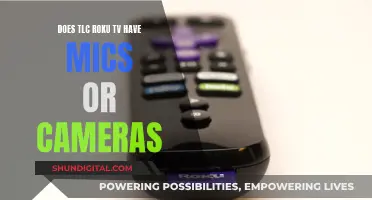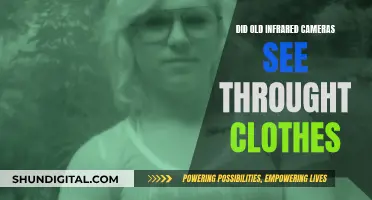
Amazon has been criticised for its extensive employee surveillance system, which has been described as demeaning and inhumane. The company uses AI cameras, scanners, and software to monitor its warehouse workers, drivers, and Whole Foods employees. Amazon claims that this surveillance is necessary for security and efficiency, but workers say that it feels like being watched constantly. The company has also been accused of using customer data without consent, with one report claiming that Amazon had people in India monitor buyers through cameras in Amazon Fresh stores.
| Characteristics | Values |
|---|---|
| AI cameras in warehouses | Monitor workers' movements and location of products |
| AI cameras in delivery vans | Monitor if drivers look away from the road, speed, or yawn |
| AI cameras in Amazon Go stores | Detect what a customer has purchased |
| AI cameras for social distancing | Enforce social distancing in warehouses |
| Human reviewers of AI camera footage | Based in India and Costa Rica |
| Human reviewers' pay | $252-$843 per month |
| Human reviewers' working hours | 8-11 hours per day |
| Human reviewers' breaks | 1.5 hours of break time |
| Human reviewers' health issues | Headaches, eye pain, deterioration in eyesight |
| Human reviewers' output | Up to 8,000 videos per day |
| Human reviewers' accuracy rate | 95-99.5% |
| Human reviewers' tracking software | Logs any periods of inactivity outside of designated break times |
| Human reviewers' discipline | Retraining, disciplinary processes, or losing their job |
What You'll Learn

Amazon's AI cameras and their impact on employees' unionization efforts
Amazon has been under scrutiny for its extensive employee surveillance, which includes AI cameras and human reviewers monitoring workers. This has significant implications for employees' unionization efforts, with workers citing the feeling of being watched as a key reason for unionization drives.
Amazon's AI camera systems, such as the "Distance Assistant," monitor warehouse workers' movements and social distancing compliance. The company claims these measures are necessary for safety and efficiency. However, workers have described the constant monitoring as stressful and demeaning, with some feeling that Amazon does not value them as human beings.
In addition to AI cameras, Amazon also employs human reviewers to monitor warehouse camera footage. These reviewers, based in India and Costa Rica, work long hours for low pay, reviewing thousands of videos daily. They are subject to strict productivity targets and are closely monitored themselves, with little room for error. This has led to physical ailments such as headaches, eye pain, and deteriorating eyesight.
The intense surveillance of employees has fueled unionization efforts, with workers seeking representation and better working conditions. The feeling of being constantly watched has been a significant factor in driving employees to organize and push back against the company's tracking practices.
Amazon has faced criticism for its anti-union tactics, including tracking workplace unrest and hiring anti-union consultants. The company has denied that its surveillance programs are specifically designed to curb union activity. However, workers view the surveillance and potential for retribution as a threat to their unionization efforts.
Overall, Amazon's use of AI cameras and extensive employee monitoring have had a significant impact on employees' unionization efforts, with workers citing the invasive nature of the surveillance as a key reason for seeking representation and better working conditions.
Frankfurt Brothels: Are They Under Surveillance?
You may want to see also

Amazon's use of a spy agency to monitor workers
Amazon has been accused of using a spy agency to monitor its workers. In November 2020, leaked documents revealed that the company had hired the Pinkerton Spy Agency, known for its anti-union efforts, to surveil warehouse workers across Europe. Pinkerton operatives even infiltrated a private strike in Barcelona, drawing up a report on the workers and journalists present. Amazon responded to the reports, stating that its activities were "fully in line with local laws and conducted with the full knowledge and support of local authorities".
In addition to Pinkerton, Amazon has been accused of employing former government agents and corporate employees with spying expertise to monitor its workers. The company advertised job postings for "Intelligence Analysts" and "Sr. Intelligence Analysts", which included monitoring "labor organizing threats" and "tracking funding and activities connected to corporate campaigns against Amazon". After public backlash, Amazon removed the listings, calling them an "error". However, the company continues to face criticism for its extensive surveillance of workers, which has been described as a threat to democracy and workers' rights.
Amazon's use of spy agencies and surveillance techniques has been a driving factor in pro-union sentiment among workers, who feel a constant sense of being watched and monitored. The company's warehouse workers are tracked through various means, including AI cameras, "time off task" systems, and social distancing "assistants". Amazon drivers are also monitored through controversial camera systems that track their movements and behaviours, such as yawning or looking away from the road.
Finding the Best Spots to Mount 15 Cameras
You may want to see also

Amazon's Cloud Cam security camera and its footage review process
Amazons Cloud Cam security camera and its footage review process
Amazon has been under scrutiny for its workplace practices, including the use of AI cameras to monitor employees. While the company has denied claims of invasive surveillance, there have been reports of Amazon utilising various camera systems and algorithms to track employee activities. One such system is the Amazon Cloud Cam, which has since been discontinued.
Amazon Cloud Cam Features
The Amazon Cloud Cam was an indoor security camera offered by Amazon that retailed for $120. It provided a 1080p Full HD live feed with two-way audio and night vision capabilities. The camera integrated with Amazon's Alexa voice assistant and allowed users to monitor their front doors, garages, or other areas of their homes. It offered motion detection and notifications, with the ability to set detection zones and receive person alerts through a subscription service. The camera could also be paired with Amazon's Key in-home delivery service, allowing couriers to deliver packages inside the user's home.
Footage Review Process
While the Amazon Cloud Cam was primarily marketed for home security, there have been concerns about how Amazon utilised footage from these devices. In 2019, a report raised privacy concerns about how customer videos were accessed and used. There were also reports of Amazon using an offshore workforce in India and Costa Rica to review warehouse camera footage. These workers were tasked with reviewing thousands of videos daily to improve Amazon's machine learning tools and monitor warehouse workers' compliance with rules and social distancing guidelines. The work was repetitive and demanding, with reviewers reporting physical issues such as headaches, eye pain, and deterioration of eyesight due to long hours staring at screens.
In summary, the Amazon Cloud Cam was a security camera offered by Amazon that provided users with various monitoring and security features. However, the company has faced scrutiny for its use of similar camera systems to monitor and track its employees, raising concerns about privacy and workplace surveillance. Amazon has denied some claims, but the impact of these practices on workers and customers has been a subject of debate.
Are You Being Watched? Detect Hidden Cameras
You may want to see also

Amazon's monitoring of its delivery drivers
Amazon has been criticised for its monitoring of its delivery drivers, with some drivers finding the practice invasive. The company has implemented several measures to track and evaluate its drivers' performance, including the Mentor app and the installation of always-on surveillance cameras in delivery vehicles.
The Mentor app, developed by eDriving, is a mobile application that Amazon delivery drivers are required to download and run on their smartphones while on the job. The app tracks and measures driving behaviours such as harsh braking, speeding, cellphone usage, and seatbelt use. It generates a daily score that evaluates the driver's performance and can impact the relationship between Amazon and third-party delivery companies. While Amazon bills Mentor as a tool to improve driver safety, drivers and privacy proponents have expressed concerns about the invasive nature of the app and the pressure it places on drivers to deliver packages as quickly as possible. There have also been issues regarding the accuracy of the app, with drivers reporting bugs that have led to unfair disciplinary actions.
In addition to the Mentor app, Amazon has also partnered with Netradyne to install high-tech video cameras in its delivery vehicles. The cameras record footage 100% of the time and provide real-time feedback to drivers, including automated suggestions such as "distracted driving" and "please slow down". The footage is automatically uploaded and reviewed by a dedicated safety team if any of the 16 predefined signals are triggered. While Amazon states that the cameras are intended to improve safety and reduce collisions, some drivers view them as a form of unfair and invasive surveillance, especially as they try to meet tight deadlines.
Apple Watch Series 8: Camera Functionality Explored
You may want to see also

Amazon's time off task system for warehouse workers
Amazon has been under scrutiny for its workplace practices, including its use of AI cameras and other monitoring systems to track employees and contractors. One of these practices is the "time off task" system, which tracks the time warehouse workers spend away from their workstations.
The "time off task" system has been criticised for creating a culture of relentless monitoring and punishment. Workers have reported feeling pressured to meet targets, avoiding bathroom breaks, and even being unfairly punished due to a lack of transparency in the system.
The system tracks a metric called "time off task" (TOT), which measures the time workers are not directly working. If an employee's TOT is too high, the system can automatically generate warnings and even termination paperwork, all without direct human supervisor intervention. However, Amazon has stated that a human supervisor must ultimately agree to terminate an employee and that employees are provided with dedicated coaching and training to improve their performance.
In response to the criticism, Amazon announced in 2021 that it would change how it measures "time off task". Instead of focusing solely on productivity, the new measure would also account for software and system bugs. Amazon stated that the goal of this change is to refocus conversations on operational issues and ensure the policy is used as intended.
While Amazon has made efforts to address concerns, the "time off task" system remains a controversial aspect of its warehouse worker monitoring practices, contributing to a sentiment of being watched and unfairly punished among employees.
The Camera's Eye: Passive Observer or Active Participant?
You may want to see also
Frequently asked questions
Yes, Amazon uses cameras to monitor its employees. The company has faced criticism for its extensive surveillance of warehouse staff, including the use of AI cameras and biometric feedback indicators.
Amazon claims that monitoring employees is necessary for security and efficiency. However, critics argue that the company's high-tech surveillance contributes to inhumane working conditions and increases the risk of injuries.
Amazon uses cameras, scanners, and software to track employee performance and monitor their movements. The company also uses algorithms to set productivity targets and notify employees when they fall below expectations.







